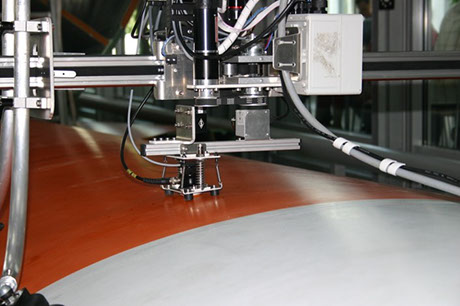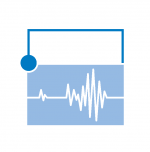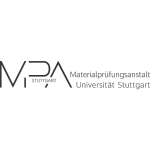Wind turbine rotor blades frequently exceed 80 m in length. Composite materials offer enormous weight savings along with excellent fatigue properties.
The main components of rotor blades are a load-carrying web-spar-structure and an aerodynamic shell. These are typically built by hand using fibre glass reinforced epoxy-based resins. The spar is bending loaded so it has a unidirectional lay-up. The web and shell are designed as a sandwich using balsa wood and foam cores.
Process automation offers great opportunities for quality control and cost reduction.

Non-destructive testing methods
Various non-destructive test methods will be used in future on rotor blades made of GFK and CFK:
- Ultrasonic testing using through-transition and reflection
- Local acoustic resonance spectroscopy (LARS)
- Infrared thermography
Many of these methods were developed at the MPA University of Stuttgart for the rotor blade test. The above-mentioned methods can be used for quality management during the rotor blade manufac-turing process as well as for condition control on the structure.




